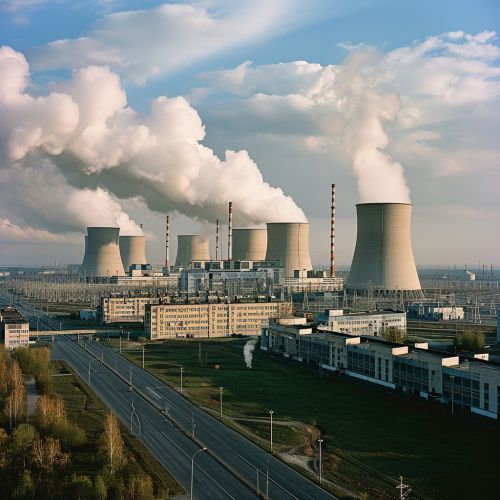Nuclear power in Ukraine
History
The history of nuclear power in Ukraine dates back to the Soviet era. The first nuclear power plant, the Chernobyl, was commissioned in 1977. The development of nuclear power in Ukraine was initially driven by the need to reduce the country's dependence on fossil fuels, particularly coal and natural gas.
Nuclear Power Plants
Ukraine currently operates four nuclear power plants: Zaporizhzhia, Rivne, South Ukraine, and Khmelnytskyi. These plants have a combined capacity of around 13,835 MW, making Ukraine one of the top ten nuclear energy producing countries in the world.


Regulatory Framework
The State Nuclear Regulatory Inspectorate of Ukraine (SNRIU) is responsible for the regulation of nuclear safety in Ukraine. The SNRIU sets safety standards, licenses nuclear facilities and activities, and conducts inspections to ensure compliance with these standards.
Nuclear Fuel Cycle
Ukraine's nuclear fuel cycle includes uranium mining, conversion, enrichment, fuel fabrication, and waste management. The country has significant uranium reserves and has developed a complete nuclear fuel cycle, including uranium mining and milling, conversion, enrichment, and fuel fabrication.
Nuclear Waste Management
The management of nuclear waste is a significant challenge for Ukraine. The country has accumulated large amounts of spent nuclear fuel and other radioactive waste from its nuclear power plants and other nuclear facilities.
Future of Nuclear Power in Ukraine
The future of nuclear power in Ukraine is uncertain. The country's nuclear power plants are aging, and there are concerns about their safety. At the same time, Ukraine is heavily dependent on nuclear power for its electricity supply, and it is unclear how this dependence can be reduced in the short to medium term.
